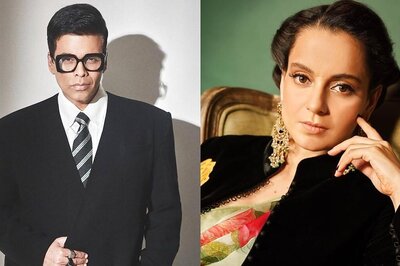
views
What does “dongsaeng” (동생) mean?
The literal translation of “dongsaeng” is “younger sibling.” Both male and female Koreans use “dongsaeng” (pronounced “dong-SANG”) for a younger sibling of any gender. They also use it to refer to young friends that they feel especially close to. People may also call younger cousins or other family members “dongsaeng.” Most find it charming for an older friend to refer to them as “dongsaeng” because it’s a warm and affectionate term originally meant for close family. However, there’s also an undercurrent of subservience to the term because, in Korea, younger people are expected to show deference to anyone older.
How to Use “Dongsaeng” (동생) Properly
Use “dongsaeng” to refer to a younger sibling. Older siblings call their younger sibling “dongseang” when speaking or referring to them. An older brother might also call a younger sister “yeo-dongsaeng” (여동생). An older sister may also call her younger brother “nam-dongsaeng” (남동생). “Dongsaeng, get me a Milkis from the kitchen. I’m thirsty!” “I’ll pick you up as soon as I’m done with baseball practice, dongsaeng.” “My yeo-dongsaeng wants to go to the movie with her friends, so I’m driving them there.” “Have you met my nam-dongseang? We’re twins, but I’m 15 minutes older!”
Use “dongsaeng” to refer to a younger cousin. As an older cousin or family member, you usually call a cousin or other family member by name. However, when you talk about or introduce them, call them “sachon-dongsaeng” (사촌동생) for males and “sachon-yeodongsaeng” (사촌여동생) for females. “This is my sachon-dongsaeng. Meet Kim Ha-joon.” “I’d like you to meet my sachon-yeodongsaeng. This is Park Ji-soo.” “I’m very close to my sachon-dongsaeng. We grew up together.” “My sachon-yeodongsaeng from Australia is coming for a visit. Can you believe I’ve never met her?”
Refer to a younger friend or acquaintance as “dongsaeng.” While Koreans most commonly use a younger friend’s name when speaking directly to them, they may also refer to them as a “dongseang” when speaking about them to another person. However, people don’t usually add “yeo” and “nam” to differentiate friends by gender when calling them “dongsaeng.” “I consider Jisung my dongsaeng, so don’t mess with him.” “Min-jun spends so much time at our house that I’ve started to think of her as my dongsaeng.” “I have to save my money for tonight. I’m going to dinner with my dongsaeng.” “I’m very close to my dongseang, but we aren’t really related.”
Other Korean Honorific Titles
Use the proper gendered titles to show respect in Korea. Many – but not all – honorific titles in Korean reflect the gender of the speaker and the person they’re speaking to. For example, “hyung” is customarily used by men to refer to older brothers or older close male friends. Women use “oppa” to refer to older brothers or older close male friends. Here are other common honorific titles used in South Korean culture: Oppa (오빠): Females use “oppa” to refer to an older male they are close with. It translates to “older brother.” Unnie (언니): Females use it to refer to an older female they are close with. It also translates as “older sister.” Noona (누나): Males use it to refer to an older female they are close with. It translates to “older sister.” Ja-mae (자매): Used by males and females to refer to more than one sister. Hyung-je (형제): Used by males and females to refer to more than one brother. Nam-mae (남매): Used by males and females to refer to group together brothers and sisters. Sunbae (선배): This translates as “senior.” Younger males and females use it to refer to anyone who is older or has more experience. In some cases, an older person may refer to a younger person with more experience as “sunbae.” Hubae (후배): “Hubae” translates as “junior,” and older people use it to refer to younger people in a university setting or in business. They also use it to refer to someone with less experience in a field. Chingu (친구): “Chingu” means “friend.” Use it to refer to someone who is the same age as you. Donggab (동갑): “Donggab” means “same age.” Use this word to identify that you were born in the same year as the other person, so you don’t have to observe the obligations and responsibilities of an older/younger person. Eomeonim (어머님): This is the formal way to say “mother” in Korean. More commonly, Koreans would call their mother eomma (엄마), which means “mom.” Abunim (아버님): This is the formal way to say “father.” Koreans would more commonly use appa (아빠), which means “dad.” Ajumoni (아주머니): This is translated as “middle-aged woman” and is a respectful way to address a woman in her 40s-60s. Ajusshi (아저씨): This is translated as “middle-aged man” and is a respectful way to address a man in his 40s-60s. Halabuji (할아버지): This is translated as “grandfather” and is a respectful way to address a man older than 70. This is a generic term that’s not necessarily used for your biological grandfather. Halmeoni (할머니): This is translated as “grandmother” and is a respectful way to address a woman older than 70. This is a generic term that’s not necessarily used for your biological grandmother. Agassi (아가씨): This is translated as “young lady” and is used to refer to an unmarried woman, similar to the English word “miss.” Imonim (이모님): The literal translation is “my aged aunt” and refers to a woman in her 50-60s in a casual setting. This is a generic term that’s not necessarily used for your biological aunt.
Show respect by adding “ssi” (씨) or “nim” (님) to the end of a name. The suffixes “ssi” or “nim” are similar to Mr. and Ms. in English-speaking countries. These suffixes are gender-neutral and appropriate for anyone. Place them at the end of the full name to show respect. For example, in Korean, Min Yoona-ssi would be Ms. Yoona Min in English. Place the “ssi” after the given name for a more casual title that still shows respect. For example, Yoona-ssi in Korean would be Ms. Yoona in English. The suffix “nim” is more formal than “ssi,” and appropriate to use in formal or professional settings. Koreans customarily list their surname first and the given name second.
Levels of Formality in Korean
There are 7 levels of politeness in Korean speech. However, only 4 are commonly used today. For formal speech, Koreans use hasipsioche. The most commonly used level is haerache, a plain yet formal way of speaking. Koreans use haeyoche, an informal but polite way to speak with strangers, colleagues, and those of higher rank or older age. When speaking with friends or younger people, Koreans use haeche. Here are descriptions of all 7 of the speech levels: Hasoseoche (하소서체): This is the most formal way of speaking in Korean. In the past, people used it when speaking to a king, queen, or high official. It’s commonly seen in historical dramas but in general use. Hasipsioche (하십시오체): People use hasoseoche in public speeches, business, by those in the service industry, with elders, strangers, and higher-ranking people. Haoche (하오체): Haoche is formal speech used among those with a similar or lower social status but is rarely used outside of historical dramas. Hageche (하게체): Hageche is a slightly outdated way of speaking to those of a similar or lower rank. It’s mostly used by older people. Haerache (해라체): Haerache is plain but formal speech commonly used in newspaper or magazine writing. People also use it to speak with close friends or family members of a similar age. Haeyoche (해요체): Haeyoche is an informal but polite speech that Koreans use in everyday life. Haeche (해체): Haeche is the most casual and informal level of speech only used with siblings, close friends, relatives, and younger people.
Korean Business Titles
Honorific titles in the workplace are based on age and experience. Most of the time, someone at work who is older than you will call you by your name with “ssi” attached to show respect. However, many Koreans use work titles. Here are some of the most commonly used work titles in Korean and their English translations: Hoejang-nim (회장님): Chairman or Chairwoman Sajang-nim (사장님): President or CEO Jeonmuisa-nim (전무이사님): Sr. Managing Director Sangmooisa-nim (상무이사님): Managing Director Isa-nim (이사님): Director Bujang-nim (부장님): Division Head Chajang-nim (차장님): Vice Head of a Division Gwajang-nim (과장님): Head of a Unit Daeri-nim (대리님): Assistant Manager Timjang-nim (팀장님): Team Leader Sawon (사원): Employee
Importance of Age in Korean Culture
Age determines the formality of your speech in Korea. Koreans often ask each other, “How old are you?” soon after they meet. This helps them figure out how to speak and act toward one another. For example: Older people are expected to lead groups, buy meals, and take responsibility for younger people. However, they will often ask younger people to perform tasks. In return, younger people are expected to bow more deeply, set the table, or pour drinks for older people.
Korean age was based on the number of new years plus 1 before 2023. Korean babies were 1 year old as soon as they were born. They then turned 2 years old on January 1 of the year after they were born. However, Koreans also used international age, which is the same method as people use in the US. As of June 28, 2023, South Korea no longer uses the traditional age-counting system. They now use the international age.




















Comments
0 comment